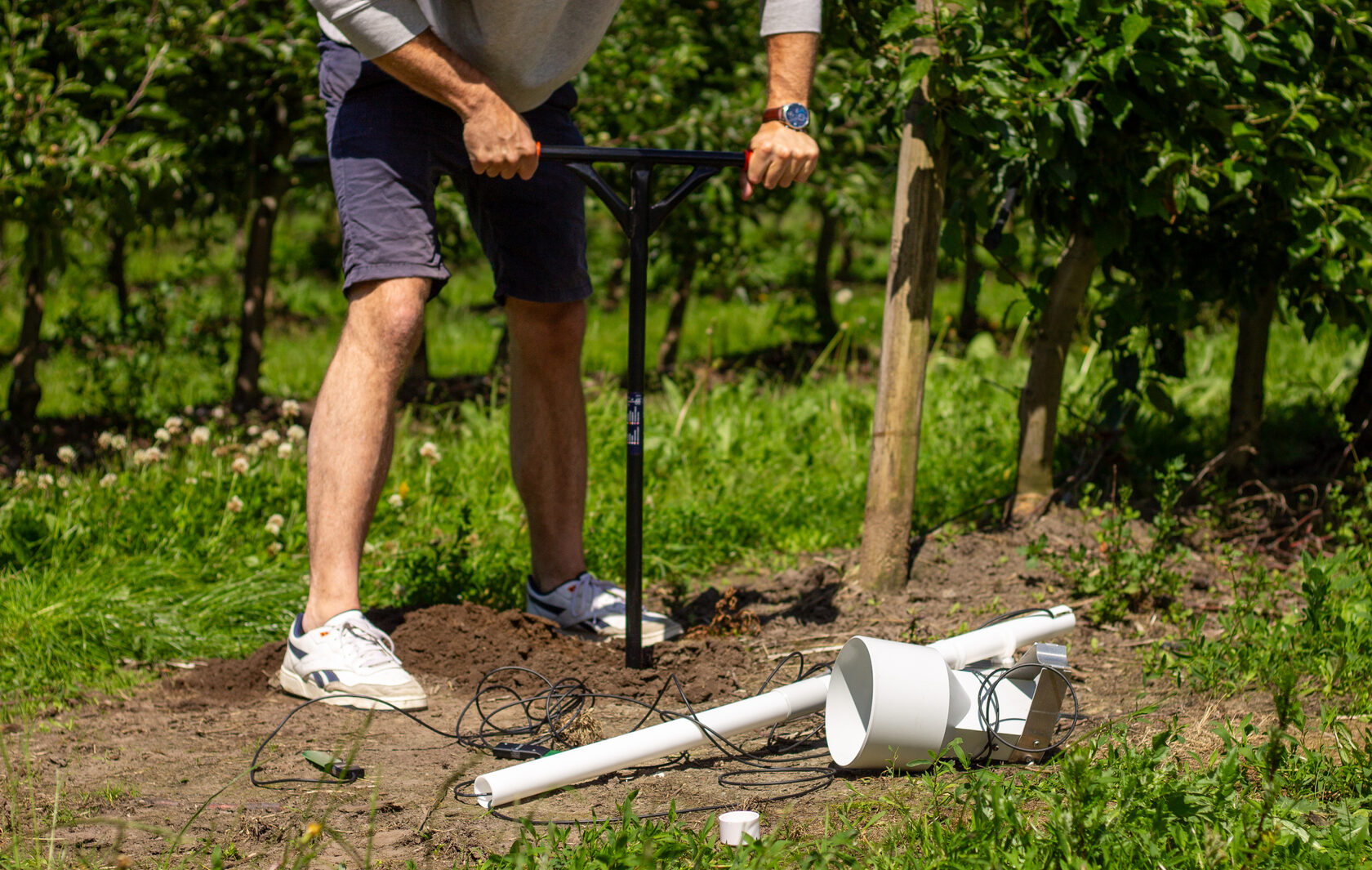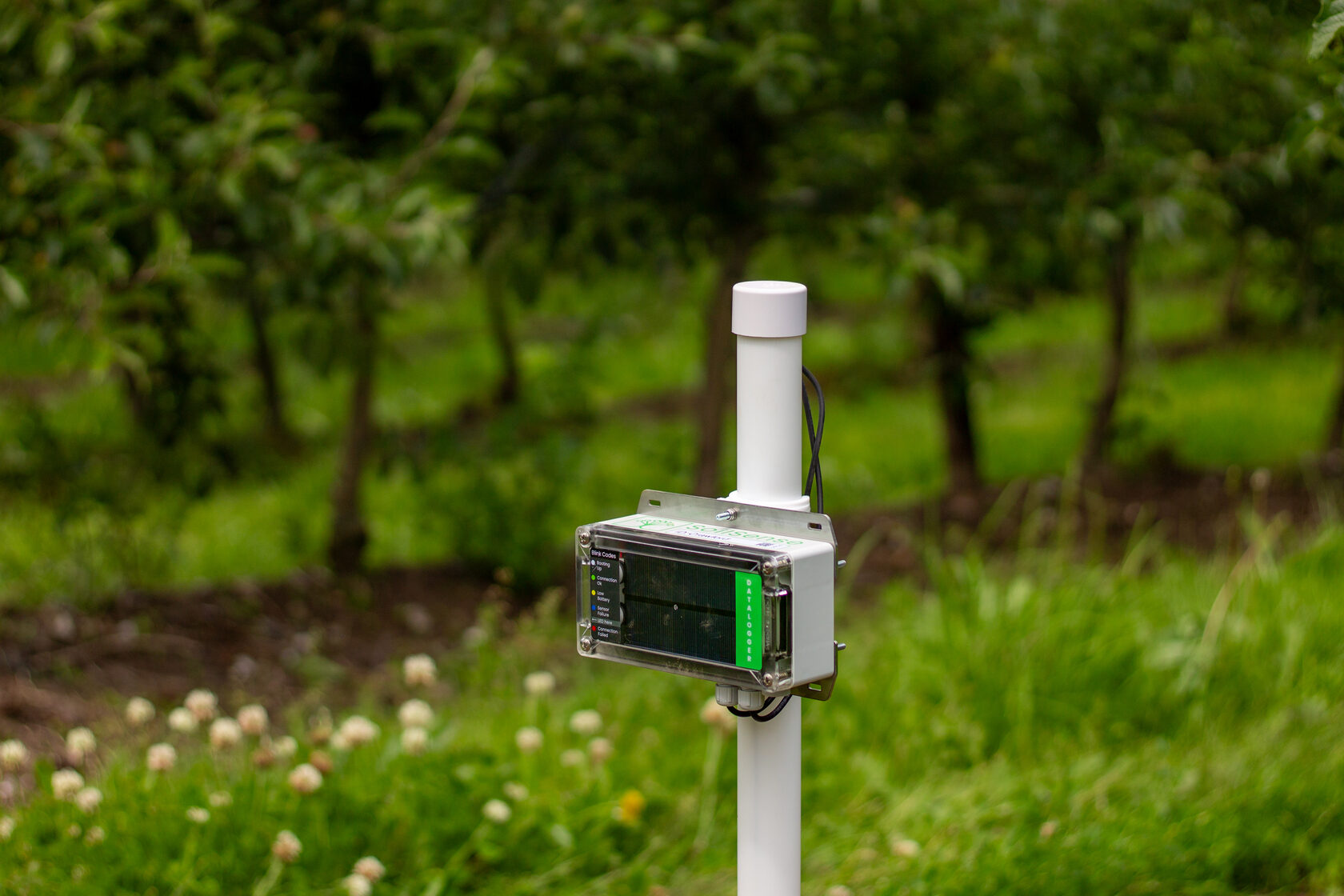Electrical Conductivity (EC) measurement in soil provides important insights into the soil’s ability to conduct electricity, which is influenced by the concentration of soluble salts in the soil.
Here’s what measuring EC can tell you:
Soil Salinity Levels: High EC indicates high levels of dissolved salts, which can affect plant growth. Too much salt can lead to poor water uptake by plants, resulting in dehydration and nutrient imbalances.
Nutrient Availability: EC gives an indirect measure of the nutrient content in the soil. Higher EC usually means a greater concentration of soluble nutrients available to plants, but excessive levels can lead to nutrient toxicity or imbalances.
Irrigation Management: By monitoring EC, you can adjust irrigation practices. If the EC is too high, you may need to leach excess salts with additional water to maintain healthy soil conditions.
Soil Health and Fertility: Regular EC readings can help assess soil health. A balanced EC level supports optimal plant growth and allows for better nutrient uptake, whereas extremes (too high or too low) can indicate underlying soil problems that may need to be addressed.
Impact of Fertilization: Over-fertilization or improper fertilizer use can lead to high EC. Monitoring EC can help ensure fertilizers are being applied properly and are not contributing to excessive salt buildup.

Understanding soil is essential for many reasons. EC measurement provides insights into soil health and fertility, helping assess salinity levels, nutrient content, and potential issues like compaction, drainage, or contamination. By tracking these factors, you can make adjustments to optimize plant growth, refine fertilization and irrigation practices, and ultimately create healthier soil for better yields.
How To Optimize EC for Plant Growth
Optimal EC (0.2 to 0.8 dS/m):
0.2 to 0.8 dS/m (decisiemens per meter) is considered ideal for most plants. This range ensures there are enough nutrients without the risk of salt stress.
0.2 to 0.8 dS/m (decisiemens per meter) is considered ideal for most plants. This range ensures there are enough nutrients without the risk of salt stress.
Low EC (below 0.2 dS/m):
• Indicates insufficient nutrient levels.
• Plants may show signs of nutrient deficiencies and poor growth.
• Indicates insufficient nutrient levels.
• Plants may show signs of nutrient deficiencies and poor growth.
Moderately High EC (0.8 to 2.0 dS/m):
• May be suitable for salt-tolerant crops but can lead to salt stress for sensitive plants.
• Regular monitoring and management are recommended.
High EC (above 2.0 dS/m):
• Indicates high salinity levels.
• Can impair plant growth, damage roots, and reduce water uptake.
• May be suitable for salt-tolerant crops but can lead to salt stress for sensitive plants.
• Regular monitoring and management are recommended.
High EC (above 2.0 dS/m):
• Indicates high salinity levels.
• Can impair plant growth, damage roots, and reduce water uptake.
When you add EC measurement to your SoilSense system, you will be able to make sure your EC is always in the optimal range by vewing the data on the graph:

The graph above shows the EC measurements in dS/m at two depths: 10 cm and 40 cm.
This visualization helps you monitor and adjust your soil management to ensure that plants have access to nutrients they need without the adverse effects of excessive salinity or nutrient toxicity.
Monitoring and Adjusting EC
With real-time EC data, you can maintain an appropriate EC level, crucial for healthy plant growth and maximum yield. Regular monitoring and tailored soil management practices will help keep EC within the ideal range for your specific crops.
To lower EC, leach the soil with clean water to flush out excess salts.
To increase EC, add fertilizers or soil amendments rich in soluble nutrients.
For additional information, feel free to reach out to us via email at contact@soilsense.io.
